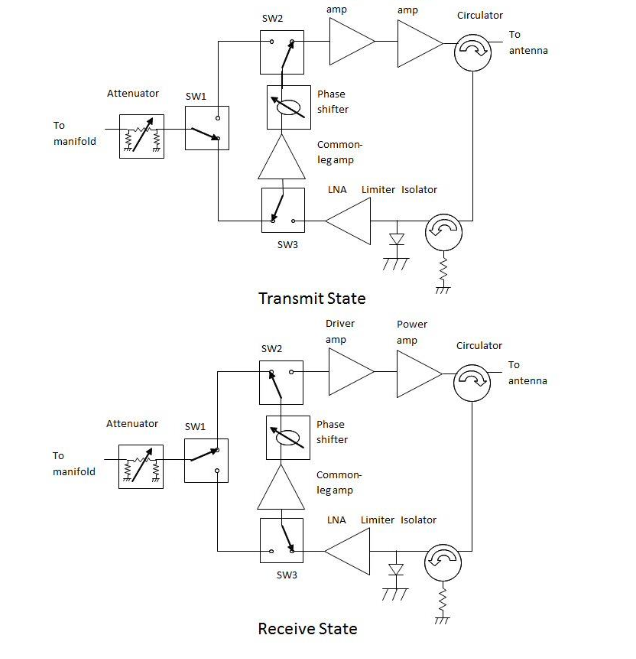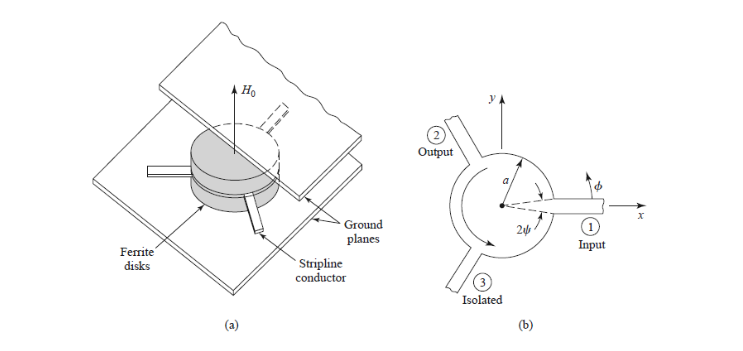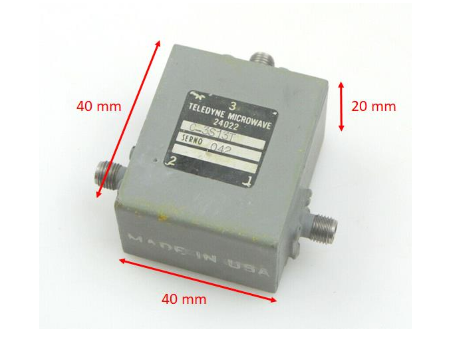University of California: 3D Printing with Magnetics & Hexaferrite Materials
Max Ho of the University of California recently published his dissertation, ‘Magnetic 3D Printing of Hexaferrite Material,’ exploring the use of progressive technology and materials, and the potential in possible applications like miniaturization and circulator integration. Ho chose 3D printing as the technology of choice because of the ability to fabricate complex technologies with the addition of magnetic material.
For this study, Ho chose hexaferrite particles due to ‘strong magnetocrystalline anisotropy and low conductance,’ able to rotate to the field direction rather than changing direction. The research team created hexaferrite particles and a liquid polymer, SU8.
“3D printing of this composite with poling will make direct printing of magnetic components that require out-of-plane and in-plane anisotropic magnetization possible,” explains Ho.
Millimeter wave, an electromagnetic spectrum, corresponds from 30 to 300 GHz—a regime that is ‘ideal’ for both satellite and covert radar communications.

The circulator allows the single antenna to be shared between the transmit and receive states. The isolator (circulator with a grounded port in the block diagram) protects the antenna from the reflected signal. The limiter prevents damage to the low noise amplifier during transmit or whenever stray radiation is present, and the low-noise amplifier (LNA)sets the noise figure of the system, but all losses between the antenna and the LNA add to the overall noise figure and must be minimized. The phase shifter and often the attenuator is used in both transmit and receive paths. In this block diagram, an amplifier and the phase shifter are configured in the common-leg circuit(CLC). The attenuator is used to add an amplitude taper across the array, to reduce sidelobes. This is typically only done in receive state.
The communication systems would use radio frequency (RF) transmit and receive (T/R) modules to boost output power, establish system noise figure for receiving, along with offering beam steering control. The use of a single antenna would be best in this scenario, with a circulator controlling signal flow.

Schematics illustrate the functions of a circulator (duplexer) and an isolator[5]. A circulator in a T/R module controls the flow of signals among the transmitter, antenna, and receiver. An isolator is a circulator with a grounded 3rdport and blocks reflected signal back to signal source.
- Monolithic microwave integrated circuits (MMICs)
- Circulators
- Isolators
- Inductors

This is areal T/R module used in a Euro Typhoon Fighter’s active phased array radar. On the left, this is just one component, a circulator, and on the right, you have quite a few Monolithic Microwave Integrated Circuits, or MMIC, such as low-noise amplifiers, high power amplifiers, and complementary metal oxide semiconductor devices. The circulator, which is a magneticcomponent, is built separated from the MMICs. This type of components uses magnetic materials that exploit unique physics and functionality not available in semiconductor materials[4]
3D printing has proven itself useful and versatile in terms of magnetic composites, along with other materials:
“A class of smart materials known as magnetorheological elastomer, composites of polymer and magnetic materials, has been fabricated via traditional techniques and only recently by 3D printing. Prior research has demonstrated printing magnetic composite and poling it in the plane of printing [16], [17], where poling is the act of setting the magnetization of the composite in a desired direction. The same concept and technique can be applied to different magnetic materials, such as hexaferrite,” Ho said.
The team used FDM/FFF 3D printing, selecting a Hyrel M30 printer. Thermoplastic filaments can be used, along with liquid or gel composites. While there are many obstacles in using hexaferrite, a blend of particles and photoresist has been found to work in prior studies—but the research team here thought the use of 3D printing would make the process even more versatile than with the use of traditional methods. And while they were able to meet their goals, Ho states that ‘there is always room for improvement.’
Ho suggests the use of single domain hexaferrite particles, or the possibility of replacing the polymer matrix with less solvent, along with in situ poling.
“This technique of 3D printing with a composite of magnetic material in a polymer matrix has a broader range of application beyond just millimeter-wave magnetic devices. Either the magnetic material or the polymer matrix can be changed to different varieties, depending on the application,” says Ho. “For example, the magnetic particles can be made of NdFeB, which would have very high magnetization and suitable for low-frequency applications.
“The polymer matrix can also be changed from SU8 to silicone-based polymer or PDMS, which is not photosensitive. If the composite meets the requirements outlined in Chapter 2, it can used in a 3D printer of FDM/FFF-type.”
Composites and other materials with the use of magnetics are growing in popularity within 3D printing, for everything from use in microgravity to sensors, functional assemblies for medical devices, and more.
What do you think of this news? Let us know your thoughts! Join the discussion of this and other 3D printing topics at 3DPrintBoard.com.

Both types also rely on the presence of an asymmetrical magnetic field provided by the magnetized ferrite. From the perspective of an electromagnetic wave traveling toward the junction, the geometry would be identical from every port. However, the field distribution of the wave inside the waveguide is not symmetrical. The H fields are polarized elliptically in planes either along or normal to the traveling direction and is of opposite orientation in either side of the waveguide. Since permeability is a tensor and thus depends on the orientation, the wave will experience asymmetry as it passes through the external magnetic field from the magnetic ferrite. A mathematical analysis of the structure that explains how a circulator works is iterated below.
Subscribe to Our Email Newsletter
Stay up-to-date on all the latest news from the 3D printing industry and receive information and offers from third party vendors.
Print Services
You May Also Like
RAPID 2025: Stratasys & trinckle Announce Strategic Software Partnership
News continues to flood in from last week’s RAPID+TCT 2025, including a new partnership between AM market leader Stratasys and Berlin-based software company trinckle. By automating important steps in fixture...
RAPID TCT 2025: Spring in the Paris of the Midwest
I’m going to go out on a limb here and say that whomever coined the phrase Detroit: Paris of the Midwest, had not spent a lot of time in Paris...
3D Printing Financials: 3D Systems Looks to Bounce Back in 2025
After a challenging year for the industry, 3D Systems (NYSE: DDD) ended 2024 with results pointing to a reset, laying the groundwork for future profitability. The company didn’t post strong...
Printing Money Episode 27: Q4 2024 Public 3D Printing Earnings Review with Troy Jensen, Cantor Fitzgerald
Q2 2025 has already begun, but public markets reporting has only just finished with Q4 2024. To tie a bow on Q4 2024, we are thankful to have Troy Jensen...


























